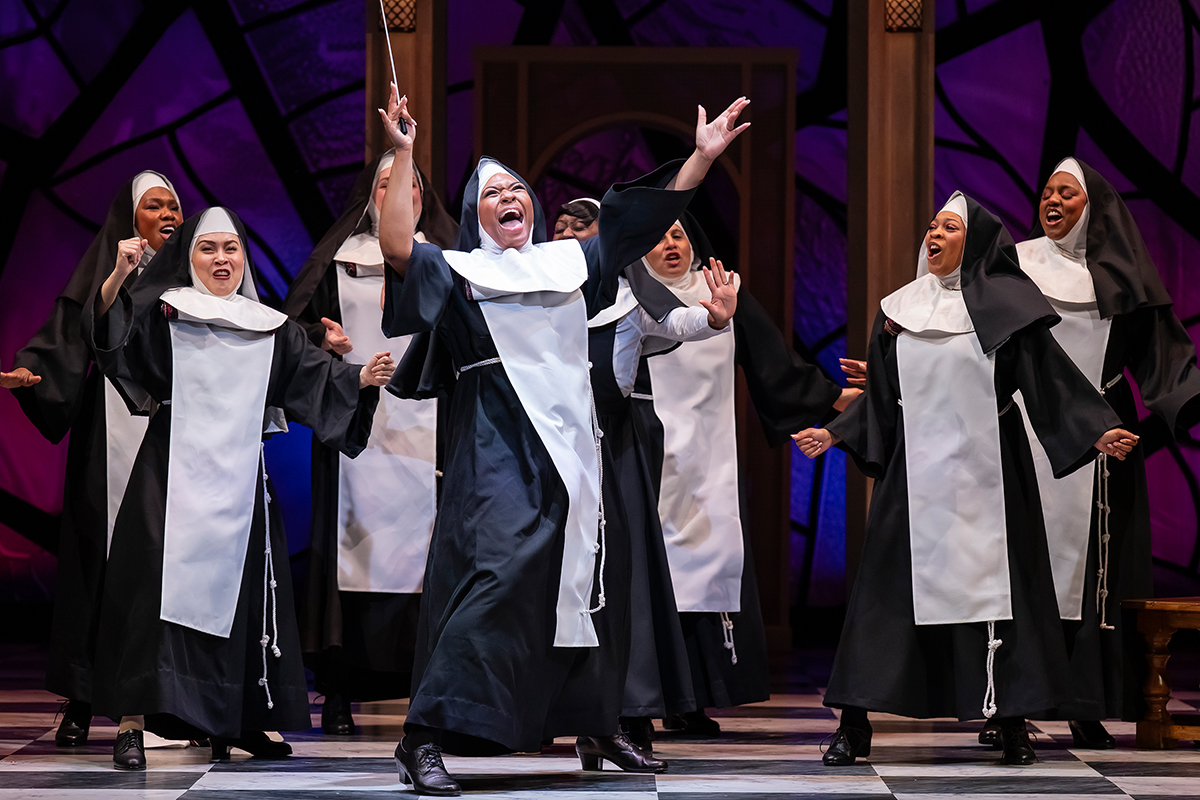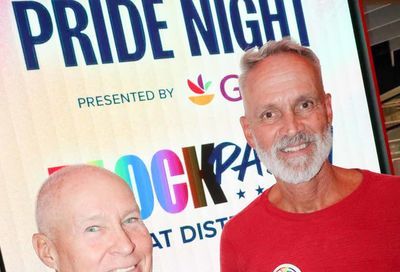25 artists that belong in the Rock & Roll Hall of Fame (but shamefully aren’t)
It's sometimes alarming to see which bands aren't yet in the Hall of Fame.
9. Electric Light Orchestra (1996)

With over 50 million albums sold and fifteen Top 20 singles, Electric Light Orchestra was one of the leading musical forces of the ’70s. Fronted by singer, songwriter and producer Jeff Lynne, ELO is known for its highly melodic, impeccably produced symphonic rock. Lynne has been the only constant member of the band, and he’s worked with a large rotating cast of collaborators on ELO projects over the years. The big breakthrough came with the glistening 1974 ballad “Can’t Get It Out of My Head.” The successful 1977 double-album Out of the Blue, loaded with great tunes like “Turn to Stone,” “Sweet Talkin’ Woman” and “Mr. Blue Sky,” is widely regarded as ELO’s artistic peak. Over three decades, the group has released 13 albums, including a span from 1975’s Face the Music through 1980’s Xanadu in which they scored five Top 10 albums in a row. Their highest charting single was “Don’t Bring Me Down,” which hit #4 in 1979, and their last substantial hit was “Calling America” in 1986. They’ve been more successful in the U.K., hitting the Top 10 fifteen times. Regarded as one of the finest producers in the business, Lynne has collaborated with numerous high-profile artists as producer, songwriter, and musician, but will always be remembered for his long string of sparkling and irresistibly catchy hits with Electric Light Orchestra.
8. The Smiths (2008)

Fusing jangly guitar-pop with Morrissey’s dour gloom and mordant humor, The Smiths are among the most important bands ever to emerge from the fertile music mecca of Manchester, Britain. The Smiths’ cultural and musical significance cannot be overstated. Their debut single, “Hand in Glove,” was released in May 1983 and launched a peerless recorded legacy that has pierced the hearts and reflected the struggles of the disaffected everywhere. Morrissey is a lyricist of boundless dexterity and wit, ranging from sardonic and sharply acerbic, to occasional fits of self-pity. His barbed pen is not afraid to tackle any subject, and his opinions are expressed with sharp certitude in both his lyrics and in interviews. His songs are often incisive commentary about isolation, and disillusionment with the absurdities of modern society that he scathingly rejects, while harboring an underlying yearning for acceptance. With a lineup including Morrissey’s musical partner and sometimes nemesis, guitarist Johnny Marr, along with drummer Mike Joyce and bassist Andy Rourke, The Smiths released four near-perfect albums from 1984 to 1987: The Smiths, Meat is Murder, The Queen is Dead and Strangeways, Here We Come. During this short period they also issued a slew of singles that they collected into a trio of essential compilations: Hatful of Hollow, The World Won’t Listen and Louder Than Bombs. Among their best songs are “How Soon is Now,” “Girlfriend in a Coma,” “Big Mouth Strikes Again,” “Still Ill,” and “What Difference Does it Make.” “This Charming Man,” with its subtly suggestive lyrics, sinuous melody and deceptively sunny instrumentation, is inarguably one of the finest singles of the ’80s. Their split in 1987 was acrimonious, to say the least. They will eventually be in the Hall of Fame, but will they get on stage together and perform? We’ll see.
7. Whitney Houston (2010)

Whitney Houston’s meteoric rise to stardom began with her self-titled debut album in 1985. The lead single “You Give Good Love” became a surprise smash, and set the stage for a staggering seven #1 singles in a row. In all, Houston hit the top spot eleven times, including her stunning 1992 recording of Dolly Parton’s “I Will Always Love You,” which is tied for second-place all-time with an incredible fourteen weeks at #1. She has sold over 200 million albums and has won seven Grammys — her status as one of the brightest pop stars of our time is unquestioned. As such, it’s inexplicable that she wasn’t inducted the first year she was eligible, yet five years have passed and she’s yet to receive a nomination. What more does the nominating committee want? When she was at the peak of her talent, nobody could match Houston’s dynamic vocal prowess. She could perform spritely dance-pop and emotional ballads with equal charm and spirit, as she progressed from a young pop starlet to a mature, sophisticated performer of incomparable power. Some of her most beloved recordings are “The Greatest Love of All,” “I Wanna Dance with Somebody (Who Loves Me),” “So Emotional,” “I’m Your Baby Tonight,” “All the Man That I Need,” “I Have Nothing,” “It’s Not Right But It’s Okay,” and her stunning ballad “I Didn’t Know My Own Strength” from the album that would become her swan song, 2009’s I Look to You. Houston died of a drug overdose in 2012, and her recorded legacy speaks for itself. She doesn’t need the validation of a Rock and Roll Hall of Fame induction, but her absence is a serious oversight that the committee should rectify.
6. The Cure (2004)

The Cure started in unassuming fashion, with their quirky 1979 post-punk debut Three Imaginary Boys. Robert Smith’s vision has always driven the band, and he and his bandmates followed it to a much darker place with three brooding classics that are cornerstones of “goth” rock –- Seventeen Seconds, Faith and the tortured Pornography. In November 1982, Smith lurched from anguish into pop with the synth-laden ditty “Let’s Go to Bed.” From that point forward, The Cure has been a schizophrenic mix of giddy, often euphoric pop and somber, emotional epics. Their peak era of success began with 1985’s The Head on the Door featuring the classic oddball pop of “Inbetween Days” and “Close to Me.” Kiss Me, Kiss Me, Kiss Me, released in 1987, highlighted by one of the decade’s perfect singles, “Just Like Heaven,” and brought The Cure an even larger audience. With their towering masterpiece Disintegration in 1989, they became an unlikely supergroup. The band’s commercial peak in America was the 1992 album Wish, with singles “High” and “Friday, I’m In Love” pushing it to #2. Critics may dismiss The Cure as “mope-rock,” and not take Smith seriously because of his ghoulish stage appearance, notable for smeared red lipstick and a wild nest of dark hair, but their opinion of his genius is ultimately irrelevant. The Cure’s influence on other bands is undeniable, and they’ve been a soundtrack to the adolescence of millions of fans. Their catalog of creative, quirky, beautifully conceived and inventive alternative-rock is loaded with treasures. The Cure belongs in the Rock and Roll Hall of Fame, and as a younger generation infiltrates the nominating committee it will doubtless happen -– hopefully before Smith is sporting a giant spiderweb of white hair instead of black.
Support Metro Weekly’s Journalism
These are challenging times for news organizations. And yet it’s crucial we stay active and provide vital resources and information to both our local readers and the world. So won’t you please take a moment and consider supporting Metro Weekly with a membership? For as little as $5 a month, you can help ensure Metro Weekly magazine and MetroWeekly.com remain free, viable resources as we provide the best, most diverse, culturally-resonant LGBTQ coverage in both the D.C. region and around the world. Memberships come with exclusive perks and discounts, your own personal digital delivery of each week’s magazine (and an archive), access to our Member's Lounge when it launches this fall, and exclusive members-only items like Metro Weekly Membership Mugs and Tote Bags! Check out all our membership levels here and please join us today!























You must be logged in to post a comment.